Introduction to View Options #
View Options allows you to select a different view (Overview, Child View, Edit, or Archive) in StrategyFrog to accomplish a different task.

- Click the
 to access View Options.
to access View Options. - Select the feature you want .
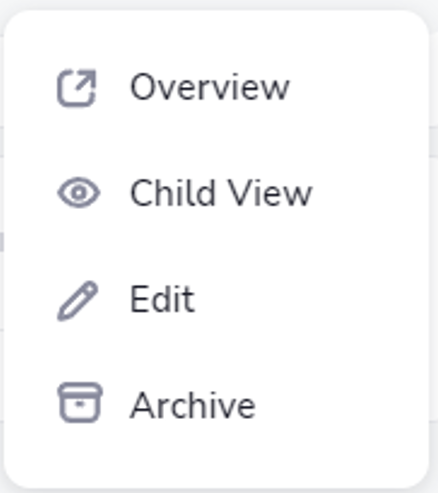 You can transition to Overview, Child View, Edit, or Archive.
You can transition to Overview, Child View, Edit, or Archive.
- Click the
Note: If your work item does not have a “child item” or “sub-items,” you will not see “Child View” in the View Options.
Overview #
Overview provides a summary view of your work item (i.e., Strategic Objective, Strategic Initiative, Objective, Key Result, or Task). It includes Item Summary, Progress History, and Action Buttons (to Edit this item or Create a “child” item).
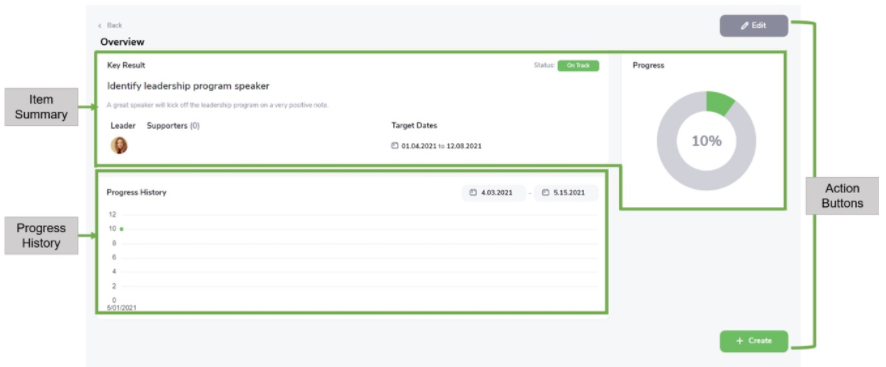
Child View #
Child View provides a summary view of your work item (i.e., Strategic Objective, Strategic Initiative, Objective, Key Result, or Task). It includes all Child Items related to the Parent Item in a view like List View.
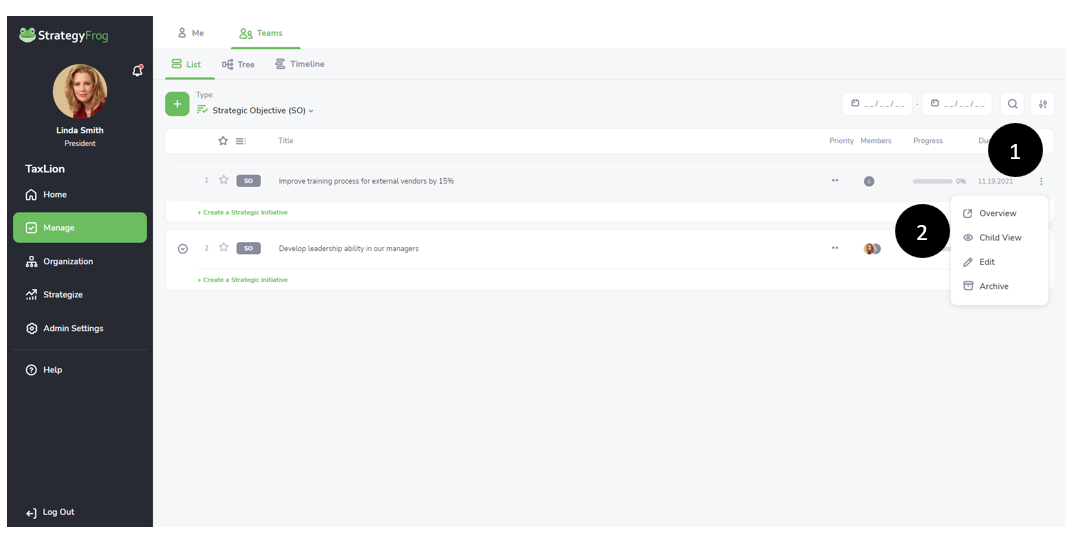
Access Child View #
- Click
 to see the View Options window.
to see the View Options window. - Click
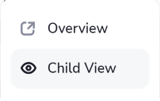 to see a list of related Child Items to the Parent Item you have selected. (Note: If there are no Child Items, then Child View will not be present.)
to see a list of related Child Items to the Parent Item you have selected. (Note: If there are no Child Items, then Child View will not be present.)
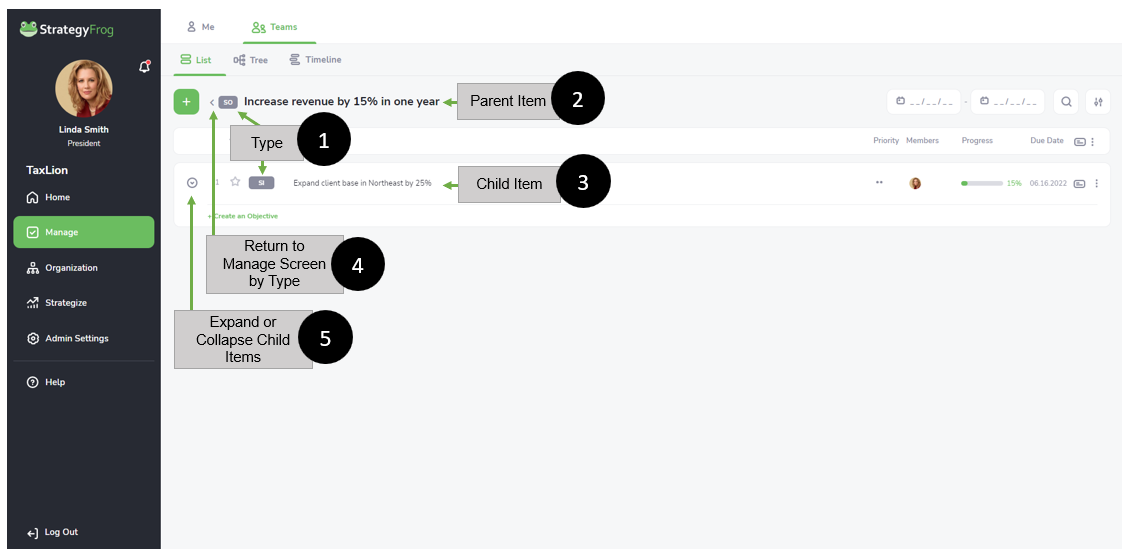
Understand Child View #
Child View offers the ability to 1) Select the Type of the item, 2) Clarify the Parent Item, 3) Work with the Child Item, 4) Return to Manage Screen by Type, or 5) Expand or Collapse Child Items.
Go to Child View for more information.
Edit #
This button allows you to Edit an Item in more detail. (Please see Edit an Item for more information.)
Note: Create an Item that provides the same functionality. Please see Create an Item for more information.
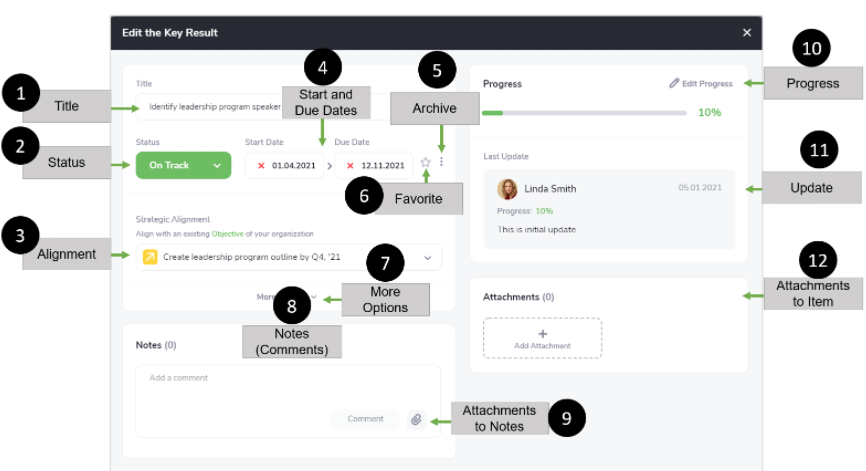
Create and Edit offers the following features:
- Title. Describe the title of your Goal Level Type by starting with an active verb (e.g., Identify leadership speakers).
- Status. Set the status of your Goal Level Type item (i.e., Not Started, On Track, At Risk, Off Track, or Completed).
- Strategic Alignment. Align your work feature with a Parent item to ensure your work is connected to a larger organizational goal or objective.
- Start and Due Dates. Set your Start Date and Due Date for your work item.
- Archive. Archive (or store) this work item; it changes to inactive status.
- Favorite. Select and mark this item as a favorite or not. (Favorite provides easy access to the item.)
- More Options. Edit additional features such as Leaders and Supporters, Priority, Visibility, and Department. You can also add a Description to provide more information about your work item.
- Notes (Comments). Share notes or information about a work item with fellow team members connected to this work.
- Attachments to Notes. Provide attachments to your work items within Notes.
- Progress. Update and share the progress of your Goal Level Type Progress with others. You can update manually or dynamically.
- Update. Provide updates about the work.
- Attachments to Item. Add an attachment that is related to your work item.
Go to Edit an Item for more information.
Archive #
This feature allows you to archive (or store) this work item for later use.
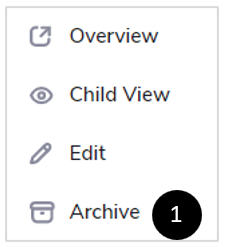
- Archive. Click Archive to access this feature.
Go to Archive for more information.



